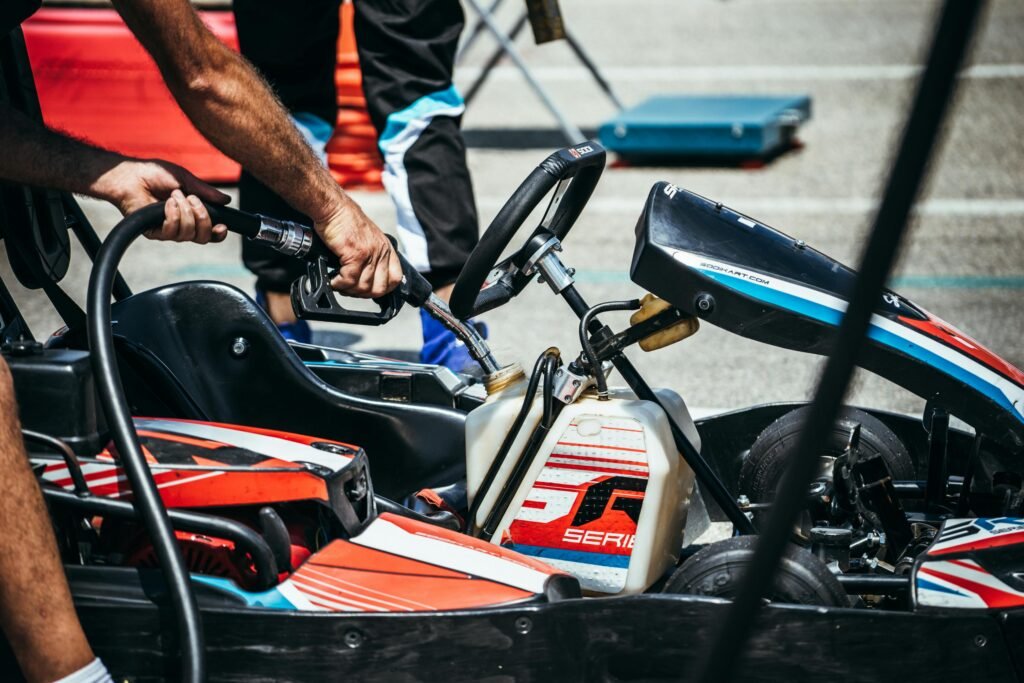While go-karting is primarily seen as an individual sport, there are clear elements of teamwork, particularly at higher and more competitive levels. Here’s a breakdown of how teamwork plays a role in karting, despite its individualistic nature:
1. Individual Competition on the Track

In most karting events, drivers compete directly against one another, aiming to achieve the fastest lap times or finish ahead in a race. The focus is often on individual performance, where each driver must:
- Execute racing strategies like finding the fastest racing line, overtaking competitors, and managing braking and acceleration.
- Handle the physical and mental demands of the race on their own, relying on their skills and instincts to outperform others on the track.
2. Team Support Behind the Scenes
Even though the racing itself is individual, competitive karting often involves a support team working behind the scenes to ensure the driver performs at their best. This team can include:
- Mechanics: Responsible for kart setup, maintenance, and repairs, ensuring the kart is in optimal condition before and during races.
- Engineers: Help tune the kart’s engine and fine-tune settings to optimize speed, handling, and overall performance.
- Strategists and coaches: Provide advice on race tactics, help drivers analyze their performance, and guide them on how to approach different sections of the track.

This support structure brings a team dynamic to what is essentially an individual sport, as success on the track often depends on the work of the entire team.
3. Endurance Karting: A Team Sport
In endurance karting, teamwork takes on an even more prominent role. These races can last several hours or even days, requiring teams of drivers to share a single kart, rotating through driver shifts. Key aspects of teamwork in endurance karting include:
- Driver rotation: Team members take turns driving, making smooth transitions during pit stops to ensure minimal downtime.
- Strategy and collaboration: Teams must work together to determine optimal pit stop times, driver order, and pacing strategies to balance speed and endurance.
- Consistency and communication: Drivers need to communicate effectively with each other and with the pit crew to adapt to changing track conditions, fatigue, and race strategies.
4. Team Racing in Professional Karting
In professional karting leagues or championships, some teams may have multiple drivers competing under the same banner, with team members sharing data, insights, and strategies to improve overall performance. While each driver races for their individual position, they can also contribute to the team’s standing in team-based championships.
A Blend of Individual and Teamwork
Go-karting is fundamentally an individual sport in terms of driver performance, but teamwork is crucial behind the scenes, especially at higher levels. Whether it’s the crew ensuring that the kart is race-ready or drivers collaborating in endurance events, teamwork plays a significant role in maximizing success on the track.
